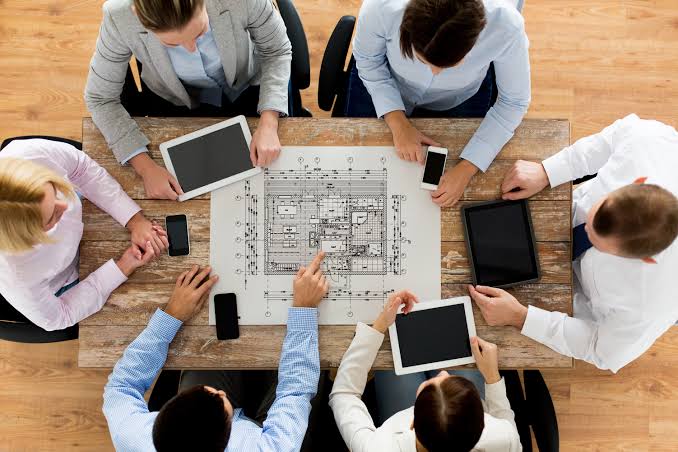Undertaking an office or industrial fitout is a significant effort that can greatly influence the functionality, aesthetics, and efficiency of a workspace. Whether you’re planning to revamp your office or set up an industrial facility, proper planning and consideration are essential.
In this blog, we’ll explore key factors to keep in mind for an office fitout and provide a detailed guide on scheduling industrial fitouts. As you’ll move forward, you will also learn a few tips to consider before choosing industrial fitout to make your attempt worth every penny. Understanding these elements will ensure a smoother process and a successful outcome that meets your specific needs.
Things to Keep in Mind When Considering Office Fitout
1. Understand Your Needs and Objectives
Before diving into an office fitout, it’s crucial to have a clear understanding of your goals. Consider the purpose of the fitout—is it to enhance productivity, create a more collaborative environment, or reflect a new brand identity? Assess your current space and identify what works and what doesn’t. Engaging with employees to gather feedback can provide valuable insights into their needs and preferences.
2. Budget and Financial Planning
Budgeting is a critical aspect of any office fitout. Determine a realistic budget that covers all aspects of the project, including design, construction, furniture, technology, and contingencies. It’s advisable to allocate a portion of the budget for unexpected expenses that may arise during the office fit out process. Consulting with Juma Office Fitout specialists can help in creating a comprehensive financial plan.
3. Design and Layout
The design and layout of your office should align with your company’s culture and operational needs. Consider elements such as open-plan versus private offices, collaborative spaces, break areas, and meeting rooms. Ergonomics play a vital role in employee wellbeing, so invest in quality furniture that promotes good posture and comfort. Additionally, think about the use of colour, lighting, and natural elements to create an inviting and productive atmosphere.
4. Compliance and Regulations
Ensure that your fitout complies with local building codes, health and safety regulations, and accessibility standards. Working with professionals who are knowledgeable about these requirements can prevent legal issues and ensure a safe working environment. It’s also essential to consider future-proofing your office by incorporating flexible and adaptable design elements.
5. Technology Integration
Modern offices rely heavily on technology, so it’s important to plan for the integration of IT infrastructure, including networking, communication systems, and smart technologies. Consider the placement of power outlets, data ports, and wireless connectivity to support a seamless work experience. Investing in the latest technology can enhance efficiency and collaboration within the office.
6. Project Management
A well-executed fitout requires effective project management. Appoint a project manager or a team to oversee the fitout process, coordinate with contractors and suppliers, and ensure timelines are met. Regular communication and updates will help keep the project on track and address any issues promptly.
Things to Consider When Scheduling Industrial Fitouts
1. Understand the Scope and Requirements
Industrial fitouts often involve complex requirements and large-scale operations. Begin by clearly defining the scope of the project, including the type of industry, specific operational needs, and any specialised equipment or machinery that will be installed. Conduct a thorough assessment of the existing space and infrastructure to identify potential challenges and opportunities for optimization.
2. Budget and Resource Allocation
Developing a comprehensive budget for an industrial fitout is essential. Factor in costs related to construction, equipment, technology, labour, and any potential disruptions to operations. It’s important to allocate resources efficiently to avoid delays and ensure that the project stays within budget. Working with experienced financial planners and fit out consultants can provide valuable guidance in this area.
3. Compliance and Safety Regulations
Industrial environments are subject to strict safety and compliance regulations. Ensure that the industrial fit outs you are considering for your warehouse or manufacturing plant adheres to all relevant standards, including occupational health and safety, environmental regulations, and industry-specific guidelines. Conduct risk assessments and implement safety measures to protect workers and minimise potential hazards.
4. Scheduling and Timeline
Scheduling an industrial fitout requires careful planning and coordination. Develop a detailed timeline that outlines each phase of the project, from initial planning and design to construction and final inspections. Consider potential disruptions to daily operations and plan accordingly to minimise downtime. Effective communication with all stakeholders, including contractors, suppliers, and employees, is crucial to keeping the project on schedule.
5. Infrastructure and Utilities
Assess the existing infrastructure and utilities to determine if upgrades or modifications are needed. This includes electrical systems, plumbing, HVAC, and any specialised installations required for your industry. Ensuring that the infrastructure can support your operational needs is vital for a successful fitout. Collaborate with engineers and utility providers to address any necessary upgrades.
6. Technology and Equipment Integration
Industrial fit outs often involve the installation of advanced machinery and technology. Plan for the seamless integration of these systems by coordinating with equipment manufacturers and IT specialists. Ensure that the layout accommodates the efficient placement and operation of machinery, and consider future scalability for potential expansion or upgrades.
7. Environmental Considerations
Sustainability is increasingly important in industrial settings. Explore opportunities to incorporate eco-friendly practices and materials into your fitout. This can include energy-efficient lighting, waste reduction strategies, and the use of sustainable building materials. Implementing green initiatives can not only reduce environmental impact but also lead to cost savings in the long run.
Final Words
Both office and industrial fit outs require careful planning, budgeting, and adherence to regulations. By understanding your specific needs, setting a realistic budget, and ensuring compliance, you can create a functional and efficient workspace that meets your operational requirements.
Effective project management and communication with stakeholders are key to a successful fitout. Whether you’re enhancing an office environment or setting up an industrial facility, these considerations before office fitout design will help you achieve a space that supports productivity and growth. Trust Juma Projects for all your office and industrial designing needs.

